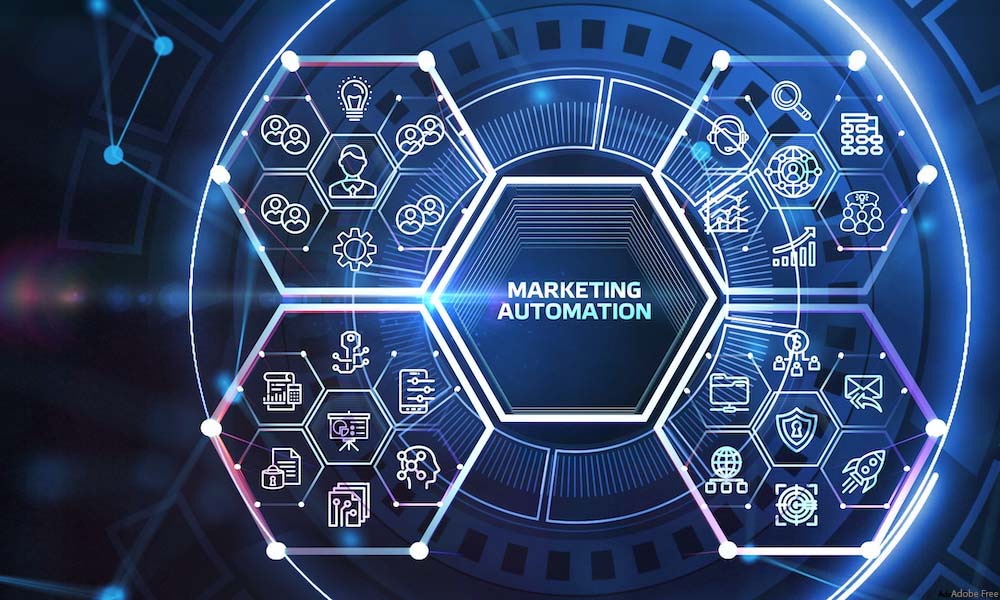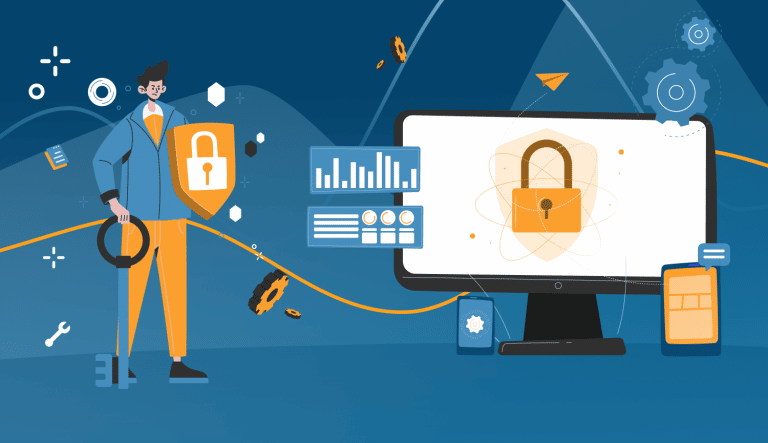Are you tired of spending hours on LinkedIn, trying to connect with potential leads or networking with industry peers? You're not alone! Many professionals find the platform overwhelming. That's where LinkedIn automation comes in to save the day. This powerful tool can help streamline your networking efforts, allowing you to engage with more people while freeing up precious time for other important tasks. In this section, we’ll dive into what
Benefits of Automating Your LinkedIn Messages

So, why should you consider automating your LinkedIn messages? The benefits are impressive and can significantly enhance your professional networking efforts. Let’s break down some key advantages:
- Time Efficiency: Automation can save you hours each week. Instead of manually sending connection requests or follow-up messages, you can schedule them to go out automatically.
- Consistency: Automation ensures that your outreach remains consistent. You can follow up with connections regularly and never miss an opportunity to engage with your network.
- Personalization: Modern LinkedIn automation tools allow for personalized messages, meaning you can still retain that personal touch while sending bulk messages.
- Increased Reach: With automation, you can engage with more people simultaneously, expanding your network and increasing your visibility.
- Lead Generation: For sales professionals, automating outreach can lead to better lead generation, as you can target specific demographics and customize your messages based on their profiles.
In summary, automating your LinkedIn messages not only saves time but also helps maintain strong relationships in your professional network. And with the right approach, you can leverage these benefits effectively to grow and nurture your connections. Isn’t it time to upgrade your LinkedIn strategy?
Choosing the Right Tools for LinkedIn Automation

When it comes to automating your LinkedIn messaging, choosing the right tools can make all the difference. Not only do the right tools save you time, but they can also enhance your networking strategy.
Here are some key factors to consider when making your selection:
- Ease of Use: Look for software that is user-friendly and doesn't require extensive technical skills. A clean interface can make your automation experience smooth and enjoyable.
- Features: Assess what features you actually need. Does the tool offer personalized messaging, tracking capabilities, and integration with other platforms? The right features can significantly improve your outreach efforts.
- Compliance: LinkedIn has strict policies regarding automation. Ensure that the tool you choose complies with LinkedIn’s terms of service to avoid getting your account suspended.
- Customization: A good tool should allow for personalized and targeted messaging. The more tailored your messages are to the recipient, the better your response rates will be.
- Pricing: Compare the costs of different tools. Many offer free trials, so you can test them out before committing to a subscription. Assess whether the price justifies the features offered.
- Support: Choose a tool that provides good customer support. Whether through chat, email, or a knowledge base, having help available when you need it can be a lifesaver.
By weighing these factors, you'll be able to choose a LinkedIn automation tool that meets your specific needs and helps you connect with your audience effectively.
Setting Up Your LinkedIn Automation Software

Once you've chosen the right LinkedIn automation software, it’s time to set it up. This process may seem daunting at first, but with a few straightforward steps, you’ll be automating your messaging in no time!
Here’s a step-by-step guide to help you:
- Create an Account: Start by signing up for the software you've selected. Most platforms will require an email address and a password. Some may ask for your LinkedIn credentials to integrate your accounts.
- Connect to LinkedIn: Authorize the software to access your LinkedIn account. This usually involves logging into LinkedIn through the automation tool and granting the necessary permissions.
- Select Your Goals: Decide what you want to achieve with your automation. Are you looking to connect with potential clients, follow up with leads, or grow your network? Setting clear goals will guide your automation strategy.
- Design Your Messaging: Craft your messages carefully. Personalization is key! Use placeholders for names and other details to make your outreach feel genuine. Remember, the more customized your message, the more likely it is to get responses.
- Set Your Limits: LinkedIn has limits on the number of connection requests and messages you can send daily. Configure your automation tool to stay under these limits to avoid penalties.
- Test and Optimize: Start with a small campaign to gauge performance. Monitor open rates, responses, and engagement. Use this data to tweak your messaging and strategy for better results.
Setting up your LinkedIn automation software doesn’t have to be complicated. Just follow these steps, keep refining your approach, and soon you'll find yourself mastering LinkedIn messaging like a pro!
5. Best Practices for Sending Automated Messages
When it comes to sending automated messages on LinkedIn, it's not just about hitting the “send” button; it's about doing it the right way. Here are some best practices to keep your automated messaging effective and engaging:
- Personalization is Key: Even though it’s automated, strive to personalize your messages as much as possible. Use the recipient's name and, if appropriate, reference something specific about their profile, such as a recent post or shared interest. This will make your message feel more genuine.
- Keep It Short and Sweet: Attention spans are short online. Aim for concise messages that get straight to the point. A few sentences are generally enough to convey your message while holding the recipient’s attention.
- Use a Friendly Tone: The way you communicate matters! Write your messages in a conversational tone. This creates a sense of rapport and makes the interaction feel more human.
- Timing Matters: Schedule your messages for times when they are most likely to be seen. Generally, weekdays during business hours work best, as that's when people check their LinkedIn notifications.
- Test and Analyze: Always keep an eye on your response rates and adjust your messaging strategy accordingly. Split testing different approaches can provide valuable insights into what works best for your network.
By following these best practices, you can enhance the effectiveness of your automated messages and make meaningful connections in the process!
6. Avoiding LinkedIn Restrictions and Risks
LinkedIn is great for networking, but with great power comes great responsibility. If you’re diving into LinkedIn automation, you need to be aware of potential restrictions and risks. Here’s how to navigate this landscape:
- Quality Over Quantity: Sending too many connection requests or messages in a short period is a red flag for LinkedIn. Focus on quality connections instead of mass outreach. Limit your messages to a reasonable number daily to avoid getting flagged.
- Follow LinkedIn's User Agreement: It's vital to understand and adhere to LinkedIn’s policies regarding third-party automation tools. Violating these terms can lead to account restrictions or even bans.
- Monitor Your Account Activity: Regularly check your account for any warning notifications. If you notice a drop in engagement or receive warnings, it might be time to dial back your automation efforts.
- Utilize Trusted Automation Tools: When choosing automation software, opt for reputable tools that are known for compliance with LinkedIn’s guidelines. Avoid tools that make unrealistic promises about connection growth.
- Stay Engaged: Remember, LinkedIn is a networking platform. Balance automation with personal engagement. Respond to messages and comments promptly, and don't shy away from personal interactions.
By being mindful of these risks and restrictions, you can successfully navigate LinkedIn's landscape while reaping the benefits of automation without falling into its traps.
Monitoring and Measuring Your LinkedIn Automation Success
Once you've set your LinkedIn automation in motion, the crucial next step is to monitor and measure its success. Think of it as tuning a musical instrument; regular checks help ensure that everything is in harmony. But how do you go about this?
First off, define what success looks like for you. Here are some key performance indicators (KPIs) to consider:
- Connection Requests Accepted: Keep track of how many of your connection requests are being accepted. A good acceptance rate means your messaging resonates with your audience.
- Engagement Rates: Measure likes, comments, and shares on your posts or messages. Higher engagement indicates that your automated outreach is hitting the mark.
- Response Rates: Monitor how many of your automatic messages get replies. This will help you understand if your messaging is effective.
- Lead Generation: If you're using LinkedIn for business, track how many leads or opportunities arise from your automation efforts.
Next, you should use analytics tools offered by LinkedIn or third-party applications. Tools like LinkedIn Sales Navigator can give you a detailed overview of your efforts.
Finally, regularly revise your strategy based on the insights you gather. Don't be afraid to pivot! After all, the world of LinkedIn is ever-changing, and your automation strategy should be too.
Conclusion: The Future of LinkedIn Automation
As we look forward, LinkedIn automation is poised to become even more sophisticated and user-friendly. The advancements in artificial intelligence and machine learning are paving the way for smarter automation tools that can mimic human interactions more closely than ever before.
So, what does this mean for users like you? Here are a few predictions:
- Increased Personalization: Future automation tools will likely offer highly personalized messaging based on user behavior and preferences. This means your outreach will feel more genuine.
- Improved Algorithm Understanding: With advancements in AI, these tools will better understand LinkedIn's algorithm, helping your content achieve higher visibility.
- Greater Compliance Features: As regulations around data and privacy become stricter, automation tools will include features that help you comply with LinkedIn's guidelines.
Ultimately, mastering LinkedIn automation for automatic messaging isn’t just about convenience; it’s about enhancing your professional network and building meaningful relationships in a digital world. By staying ahead of trends and continuously adapting, you can navigate the evolving landscape of LinkedIn with confidence.
 admin
admin








